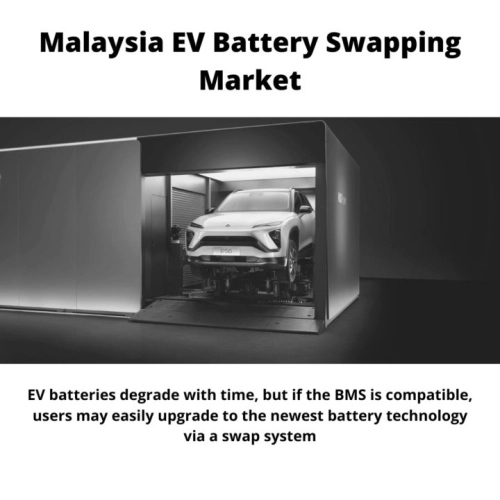
- Get in Touch with Us

Last Updated: Apr 25, 2025 | Study Period: 2024-2030
By separating the cost of the battery from that of the vehicle itself, battery swapping promotes new business models. Battery as a service (BaaS) business models and independent battery asset management companies are a trend we are seeing in the industry.

Swapping may also be advantageous to consumers. EV batteries degrade with time, but if the BMS is compatible, users may easily upgrade to the newest battery technology via a swap system. When batteries are centrally trickle charged in a switch station, the degradation caused by DC fast charging is also eliminated.
Not just in automotive but also in micro-mobility, ride-sharing fleets, autonomous vehicles, and heavy-duty commercial fleets, the technology is likely going to play a big part in allowing electrification.
Additionally, it could be among the most economical methods to build the huge stationary energy storage systems needed to support the world's rising renewable energy supply.
The Malaysia EV Battery Swapping Market accounted for $XX Billion in 2021 and is anticipated to reach $XX Billion by 2026, registering a CAGR of XX% from 2024 to 2030.
As sales rise in the largest vehicle market in the world, Chinese automaker Geely has revealed that it plans to build five thousand battery swapping stations for EVs globally.
The Geely Technology Group has begun to provide its rapid battery swapping service, which is designed to be inexpensive and as convenient as possible. The CaoCao ride-hailing cars that require speedy servicing to get back on the road and generate money were the focus of the initial phase of this drive-through concept.
The cost of mining the raw materials and the cost of battery manufacture are still issues that are being put on hold for the major agenda, which is "climate change," thus it is unclear how cost-effective battery swapping will be in the long term.
| Sl no | Topic |
| 1 | Market Segmentation |
| 2 | Scope of the report |
| 3 | Abbreviations |
| 4 | Research Methodology |
| 5 | Executive Summary |
| 6 | Introduction |
| 7 | Insights from Industry stakeholders |
| 8 | Cost breakdown of Product by sub-components and average profit margin |
| 9 | Disruptive innovation in the Industry |
| 10 | Technology trends in the Industry |
| 11 | Consumer trends in the industry |
| 12 | Recent Production Milestones |
| 13 | Component Manufacturing in US, EU and China |
| 14 | COVID-19 impact on overall market |
| 15 | COVID-19 impact on Production of components |
| 16 | COVID-19 impact on Point of sale |
| 17 | Market Segmentation, Dynamics and Forecast by Geography, 2024-2030 |
| 18 | Market Segmentation, Dynamics and Forecast by Product Type, 2024-2030 |
| 19 | Market Segmentation, Dynamics and Forecast by Application, 2024-2030 |
| 20 | Market Segmentation, Dynamics and Forecast by End use, 2024-2030 |
| 21 | Product installation rate by OEM, 2023 |
| 22 | Incline/Decline in Average B-2-B selling price in past 5 years |
| 23 | Competition from substitute products |
| 24 | Gross margin and average profitability of suppliers |
| 25 | New product development in past 12 months |
| 26 | M&A in past 12 months |
| 27 | Growth strategy of leading players |
| 28 | Market share of vendors, 2023 |
| 29 | Company Profiles |
| 30 | Unmet needs and opportunity for new suppliers |
| 31 | Conclusion |
| 32 | Appendix |